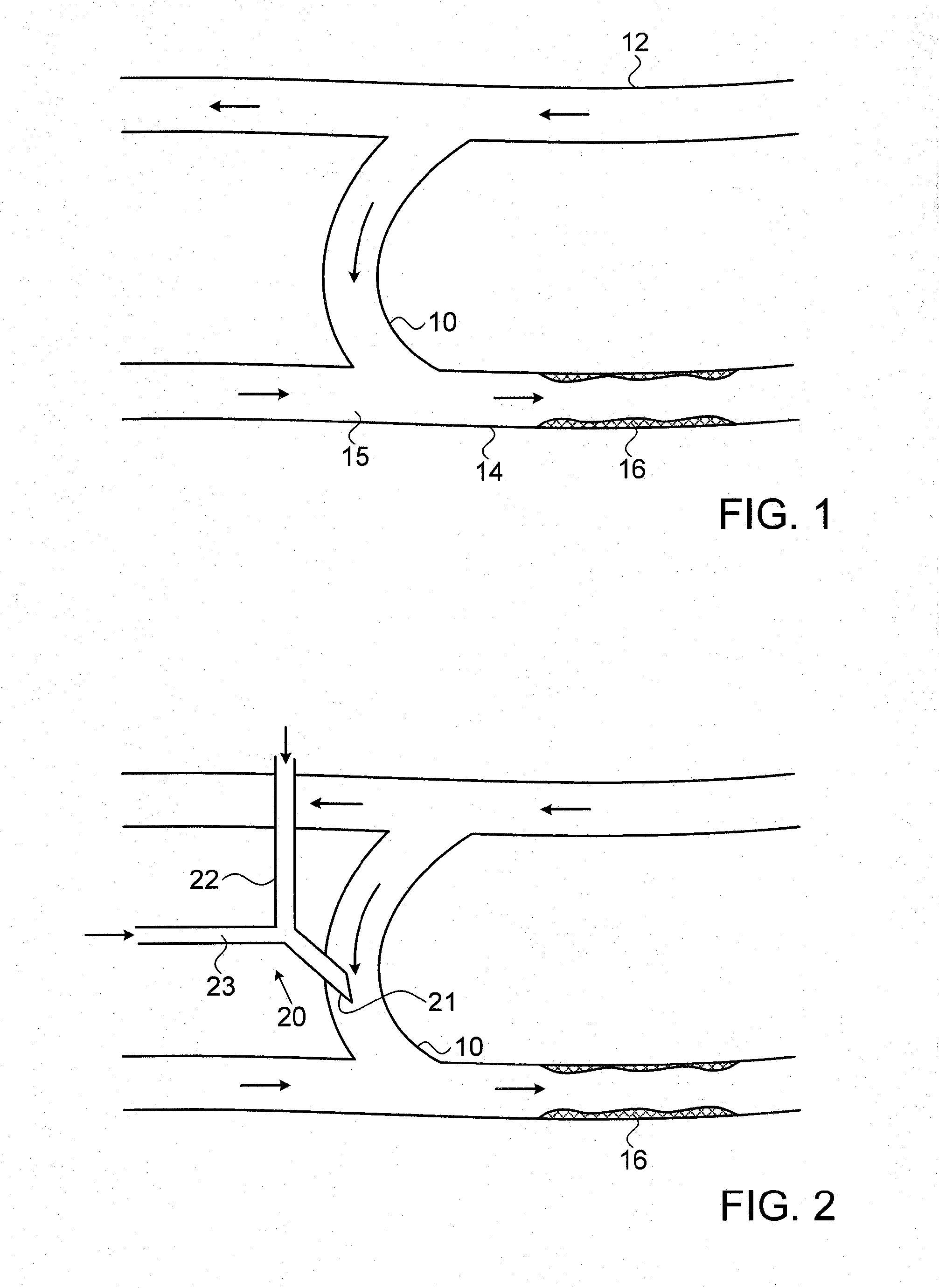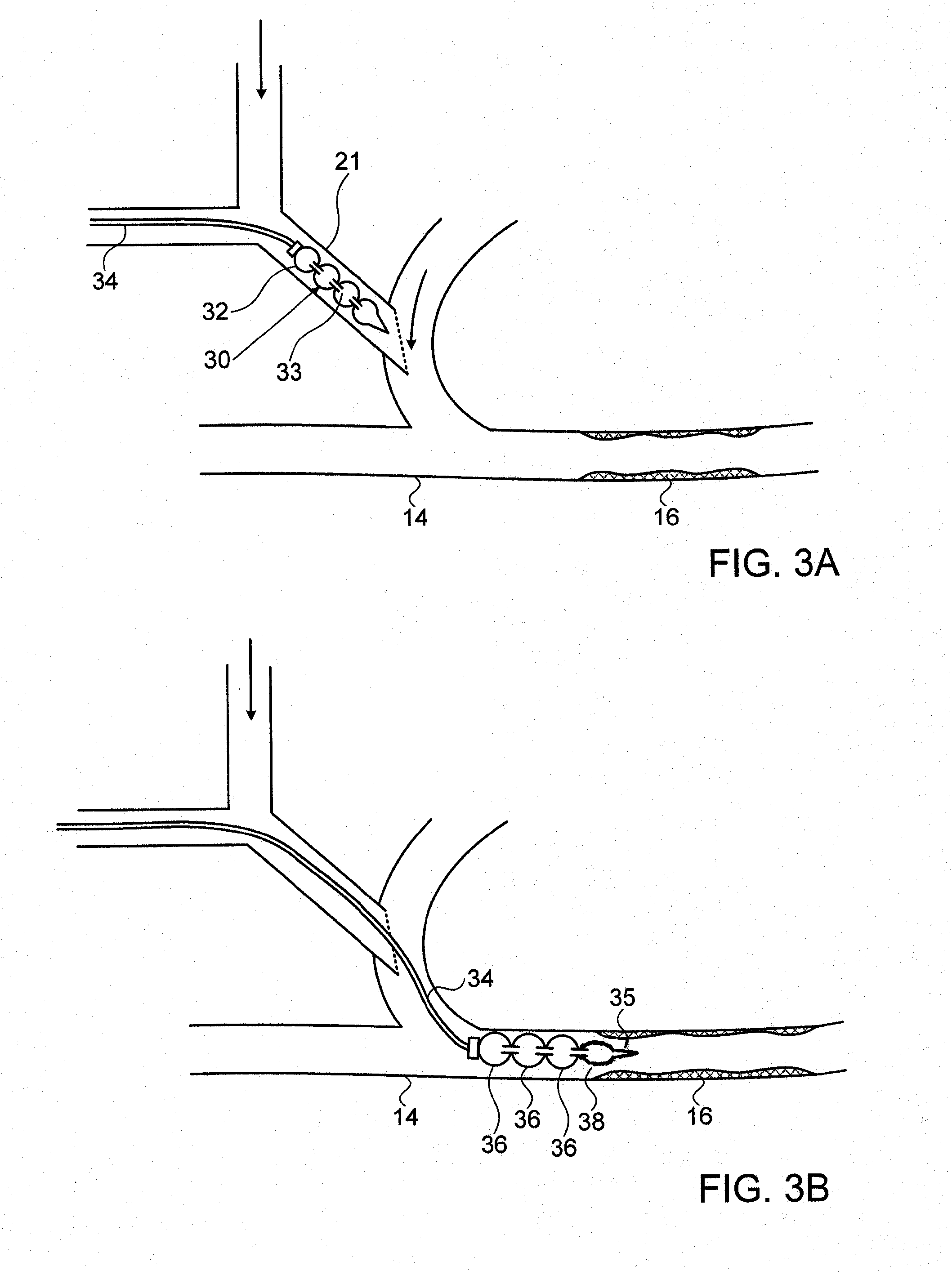Device for prevention of shunt stenosis
a technology for shunts and shunts, which is applied in the direction of balloon catheters, other medical devices, catheters, etc., can solve the problems of shunt stenosis, affecting the efficiency of hemodialysis, and affecting the flow of blood in the veins, so as to prevent shunt stenosis, prevent shunt stenosis, and improve hemodialysis efficiency.
- Summary
- Abstract
- Description
- Claims
- Application Information
AI Technical Summary
Benefits of technology
Problems solved by technology
Method used
Image
Examples
Embodiment Construction
[0043]Reference is now made to FIG. 1, which illustrates schematically the layout of the vasculature in the forearm of the subject, with an arterial-venous shunt 10 installed between an artery 12 and a vein 14, as is customarily done for a subject undergoing a course of hemodialysis treatment. The arrows in the blood vessels and in the shunt show the direction of blood flow. The needle for withdrawing blood for sending to the dialysis machine can either be inserted into the shunt 10 itself, or into the vein immediately after the point at which the shunt joins the vein 15. In FIG. 1 there are shown a deposit of unwanted lesion tissue 16 in the vein, downstream from the shunt-vein joining point, resulting from stenosis of the vein supposedly associated with the presence of the dialysis shunt. In many cases, this plaque deposits extends for a distance of 1 to 2 cm from the shunt-vein junction 15.
[0044]Reference is now made to FIG. 2, which illustrates schematically an exemplary kit for...
PUM
 Login to View More
Login to View More Abstract
Description
Claims
Application Information
 Login to View More
Login to View More - R&D
- Intellectual Property
- Life Sciences
- Materials
- Tech Scout
- Unparalleled Data Quality
- Higher Quality Content
- 60% Fewer Hallucinations
Browse by: Latest US Patents, China's latest patents, Technical Efficacy Thesaurus, Application Domain, Technology Topic, Popular Technical Reports.
© 2025 PatSnap. All rights reserved.Legal|Privacy policy|Modern Slavery Act Transparency Statement|Sitemap|About US| Contact US: help@patsnap.com



